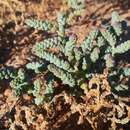pt-BR
nomes no trilho de navegação


Halopeplis ist eine Pflanzengattung in der Familie der Fuchsschwanzgewächse (Amaranthaceae). Es sind einjährige oder ausdauernde Salzpflanzen mit nicht gegliederten Sprossachsen und dickfleischigen, stängelumfassenden Blättern. Sie sind vom Mittelmeerraum und Nordafrika über Südwest- und Zentralasien bis nach China verbreitet.
Die Halopeplis-Arten sind einjährige oder ausdauernde krautige Pflanzen. Die verzweigten Stängel sind kahl und nicht gegliedert. Die Laubblätter stehen wechselständig, die untersten auch fast gegenständig, und sind sehr fleischig, kahl, fast kugelförmig oder eiförmig, den Stängel umfassend, mit vorhandener oder reduzierter Blattspreite.[1]
Die Blütenstände stehen im oberen Teil der Pflanze als seitliche und endständige zylindrische Scheinähren. Die spiralig angeordneten Zymen enthalten in der Achsel eines schuppenförmigen Tragblatts jeweils drei Blüten. Diese sind in die Blütenstandsachse eingesenkt und mehr oder weniger miteinander, mit dem Tragblatt und der Achse verwachsen. Die meist zwittrigen Blüten besitzen drei verwachsene, unauffällig dreilappige Tepalen. Die ein bis zwei (selten drei) Staubblätter ragen nur wenig aus der Blüte heraus. Es sind zwei Narben vorhanden.[1]
Die Frucht bleibt in der Blütenstandsachse eingeschlossen, die Fruchtwand ist häutig.[1] Die Samen sind eiförmig bis rundlich, zusammengedrückt, mit ledriger, glatter oder papilloser Samenschale.[2] Der halb-ringförmige Embryo[2] ist hakig oder kurvig. Es ist reichlich Nährgewebe vorhanden.[1]
Die Arten von Halopeplis sind vom Mittelmeerraum und Nordafrika über Südwest- und Zentralasien bis nach China (Xinjiang) verbreitet.[1][2][3]
Als Salzpflanzen besiedeln sie Meeresküsten oder salzige Lebensräume in Inland, wie Salzebenen und das Ufer von Salzseen.[1]
Die Gattung Halopeplis wurde 1866 von Franz Ungern-Sternberg aufgestellt.[4] Bereits 1857 hatte Alexander von Bunge den Namen Halopeplis benutzt, allerdings ohne eine gültige Erstbeschreibung zu verfassen. Als Lectotypus wurde Halopeplis nodulosa festgelegt,[5] dies ist ein Synonym von Halopeplis amplexicaulis.[1]
Die Gattung umfasst drei Arten:[2][6]
Halopeplis ist eine Pflanzengattung in der Familie der Fuchsschwanzgewächse (Amaranthaceae). Es sind einjährige oder ausdauernde Salzpflanzen mit nicht gegliederten Sprossachsen und dickfleischigen, stängelumfassenden Blättern. Sie sind vom Mittelmeerraum und Nordafrika über Südwest- und Zentralasien bis nach China verbreitet.
Halopeplis is a genus in the family Amaranthaceae. The plants are halophytes with not articulated stems and fleshy stem-clasping leaves. There are three species, occurring from the Mediterranean basin and North Africa to Southwest Asia and Central Asia.
The species of Halopeplis are succulent annual ore perennial herbs with glabrous, not jointed plant stems. The alternate or nearly opposite leaves are fleshy, glabrous, globular or ovate, sessile and stem-clasping, with distinct or reduced leaf blades.[1]
The cylindrical spike-like inflorescences are standing laterally or terminally in the upper parts of the plants. In spirally arranged cymes groups of three flowers are sitting in the axils of fleshy bracts. The mostly bisexual flowers are immersed in the inflorescence axis and more or less connate to each other, to the bract, and to the axis. The inconspicuously three-lobed perianth consists of three connate tepals. There are one ore two (rarely three) stamens shortly exserting the flower, and an ovary with two stigmas.[1]
The fruit remains enclosed in the inflorescence axis, the fruit wall (pericarp) is membranous.[1] The seed is ovoid to circular, compressed, with leathery, smooth or papillose seed coat.[2] The seed contains the half-annular,[2] uncinate or curved embryo and copious perisperm (feeding tissue).[1]
The distribution area of Halopeplis covers the Mediterranean region, North Africa, Southwest Asia, Central Asia to China (Xinjiang).[1][2][3]
The plants are halophytes and grow on wet salty soils at sea shores, lagoons, or inland at the edge of salt lakes and in saline mudflats.[1]
The genus Halopeplis was first published in 1866 by Franz Ungern-Sternberg.[4] In 1857, Alexander Bunge had introduced the name Halopeplis, but without a valid description. The lectotype of the genus is Halopeplis nodulosa,[5] which is a synonym of Halopeplis amplexicaulis.[1]
The genus Halopeplis comprises three species:[2][6]
Halopeplis is a genus in the family Amaranthaceae. The plants are halophytes with not articulated stems and fleshy stem-clasping leaves. There are three species, occurring from the Mediterranean basin and North Africa to Southwest Asia and Central Asia.
Halopeplis es un género de plantas fanerógamas pertenecientes a la familia Amaranthaceae. Comprende 11 especies descritas y de estas, solo 3 aceptadas.[1]
Son plantas anuales o perennes suculentas con alternativa de sub-sésiles carnosa corta, con las hojas ovoides a sub-globulares. La inflorescencia es compacta, espiciforme, generalmente terminal. Flores perfectas o pistiladas agrupadas en grupos de 3; perianto pequeño; estambres 1 o 2; pistilo con ovario vertical y estigmas 2; utrículo incluido, con pericarpio membranoso; semilla elipsoide con el embrión con forma de gancho.[2]
El género fue descrito por Alexander von Bunge y publicado en Versuch einer Systematik der Salicornieen 102. 1866.[2] La especie tipo es: Halopeplis nodulosa (Delile) Bunge ex Ung.-Sternb.
A continuación se brinda un listado de las especies del género Halopeplis aceptadas hasta octubre de 2012, ordenadas alfabéticamente. Para cada una se indica el nombre binomial seguido del autor, abreviado según las convenciones y usos.
Halopeplis es un género de plantas fanerógamas pertenecientes a la familia Amaranthaceae. Comprende 11 especies descritas y de estas, solo 3 aceptadas.
Halopeplis Bunge, 1857 è un genere di piante appartenente alla famiglia delle Chenopodiaceae (o Amaranthaceae secondo la classificazione APG[1]).
Comprende le seguenti specie:[2]
Halopeplis Bunge, 1857 è un genere di piante appartenente alla famiglia delle Chenopodiaceae (o Amaranthaceae secondo la classificazione APG).
Halopeplis é um género botânico pertencente à família Amaranthaceae.[1]
Halopeplis é um género botânico pertencente à família Amaranthaceae.
Halopeplis là chi thực vật có hoa trong họ Amaranthaceae.[1]
Halopeplis là chi thực vật có hoa trong họ Amaranthaceae.
盐千屈菜属(学名:Halopeplis)是藜科下的一个属,为一年生或多年生草本植物。该属共有3种,分布于中亚。[1]